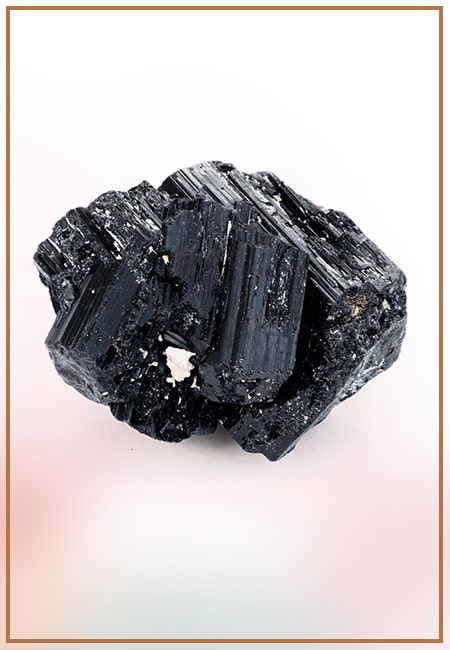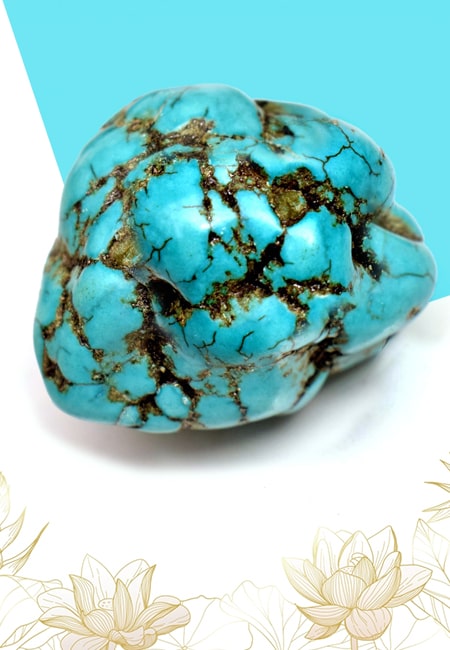- Written By Team DWS
- Festivals
- January 04, 2025
Understanding the Significance of Makaravilakku: Traditions and Beliefs
Makaravilakku is one of the most significant festivals celebrated in Kerala, India, particularly among the devotees of Lord Ayyappa. It coincides with the Makaravilakku festival, occurring on the day of Makarasamkranti in January each year. The festival holds deep religious significance and plays a crucial role in Kerala's cultural identity. As we explore the traditions, beliefs, and significance surrounding Makaravilakku, we gain a deeper understanding of not just a festival, but also a rich tapestry of faith, devotion, and communal harmony.
-dws638715554037000958.jpg)
The Mythology Behind Makaravilakku
The origins of Makaravilakku are steeped in mythology and spirituality, centered around the Sabarimala temple dedicated to Lord Ayyappa. According to Hindu mythology, Ayyappa was born from the union of Lord Shiva and Mohini, the female avatar of Lord Vishnu. He is revered as a god of righteousness and meditation, signifying the hope and spiritual aspirations of his devotees.
The Sabarimala temple is located in the Western Ghats of Kerala and is surrounded by dense forests, making it a sacred pilgrimage site for many. The devotees undertake a rigorous 41-day austerity period, during which they adhere to strict guidelines like abstaining from alcohol, meat, and certain comforts. This time of penance aims to purify the mind and body, preparing devotees for a spiritual journey.
Makaravilakku marks the culmination of the pilgrimage season, which sees millions of devotees trekking to Sabarimala from across India. The festival itself is a celebration of the deity's manifestation in the form of a celestial light, known as Makarajyothi, which is believed to appear on the eve of Makaravilakku.
The Festivities
The festivities of Makaravilakku are marked by various rituals and observances that create a deep sense of community among devotees. The Sabarimala temple is transformed into a vibrant epicenter of faith and devotion during this time. Pilgrims and visitors engage in several traditional activities:
1. Makara Jyothi and Makara Vilakku
One of the most anticipated moments during Makaravilakku is the sighting of the Makara Jyothi, a celestial light that devotees believe is a manifestation of Lord Ayyappa. It is said to appear on the horizon at a specific time, and thousands of devotees gather in and around the Sabarimala temple to catch a glimpse. This moment is imbued with spiritual significance and is often accompanied by the singing of hymns and offering of prayers, symbolizing the divine connection between the devotees and the deity.
As part of the celebrations, the Makara Vilakku (the ceremonial lamp) is lit, further enhancing the festive atmosphere. The whether-lighted lamp is also a symbol of victory of light over darkness and knowledge over ignorance, resonating with the spiritual theme of the festival.
2. The Rituals
Leading up to Makaravilakku, various rituals are performed in the temple. This includes the Kalabha Vazhchakkal, a ceremonial procession carrying the ceremonial offerings from various regional temples. Devotees engage in chanting, singing, and dancing, creating a euphoric ambiance. They also offer special Poojas (ritualistic prayers), which are part of the festival's tradition, including the Makara Sankranti Pooja, dedicated to invoking blessings of abundance and prosperity.
3. Traditional Offerings
Food plays a pivotal role in Makaravilakku's festivities. On this day, traditional offerings such as payasam (a sweet rice pudding), Appam, and other delicacies are prepared and shared among devotees. It is a time for families to come together, strengthening bonds and promoting communal ties.
4. Special Transport and Confluences
Makaravilakku is also characterized by increased transportation arrangements to and from the temple. The roads leading to Sabarimala are lined with devotees clad in traditional attire, often in the signature black and saffron colors, symbolizing their devotion. The confluence of devotees hailing from diverse backgrounds and regions is a testament to the universal appeal of the festival.
5. The Role of Community
Makaravilakku transcends individual spiritual experiences; it fosters a sense of communal identity. Local communities unite in preparation for the festival, ensuring that everything from the transportation of pilgrims to the cooking of traditional dishes is managed collectively. The festival thus becomes an embodiment of collective effort driven by a shared faith, transcending social, economic, and cultural divides.
The Spiritual Significance
Aside from the festivities, Makaravilakku carries profound spiritual teachings for its devotees. It encourages introspection, self-discipline, and commitment to dharma. The arduous journey to Sabarimala challenges individuals to overcome their personal limits and emerge spiritually renewed. The fast and meditation practices observed during the 41-day penance serve to cultivate resilience and clarity of purpose, fostering a deep connection to Ayyappa's ideals of truth and justice.
Moreover, the festival emphasizes the idea of unity and equality among all devotees, regardless of caste, creed, or background. This principle is in alignment with Ayyappa's teachings, which promote the notion that true devotion transcends societal divisions. The collective experience of the pilgrimage serves as a reminder of the shared human experience and the power of faith to bring people together.
Conclusion
Understanding the significance of Makaravilakku reveals a multifaceted festival woven into the cultural and spiritual fabric of Kerala. It is not only a time of celebration but also a period of reflection and renewal for millions. The traditions and rituals associated with Makaravilakku symbolize hope, resilience, and communal harmony, embodying the core values of devotion to Lord Ayyappa. As devotees gather to celebrate this vibrant festival, they reinforce their faith, strengthen community bonds, and experience a profound connection to the divine, making Makaravilakku a cherished cultural and spiritual landmark in the lives of many.
-dws638715554288910269.jpg)
Makaravilakku FAQs: Frequently Asked Questions About the Makaravilakku Festival
Here are some frequently asked questions (FAQs) about Makaravilakku, a significant festival celebrated in Kerala, India, particularly associated with the Sabarimala temple and the deity Ayyappa.
1. What is Makaravilakku?
Makaravilakku is a festival celebrated at the Sabarimala temple in Kerala, marking the celestial sighting of the star Makara (Capricorn) and the culmination of the annual pilgrimage season. It typically occurs in mid-January during the Malayalam month of Makaram.
2. Why is Makaravilakku important?
The festival holds immense religious significance for devotees of Lord Ayyappa. It symbolizes the beautiful legend of Ayyappa and marks the arrival of a divine light, believed to be the manifestation of the deity, which is seen by the pilgrims at the hill shrine.
3. When is Makaravilakku celebrated?
Makaravilakku is celebrated on the day when the sun enters the Makara (Capricorn) zodiac sign, typically falling between January 14 and January 15 each year.
4. How is Makaravilakku celebrated?
The celebrations involve various rituals, including special prayers at the Sabarimala temple, the lighting of lamps, and the viewing of the Makaravilakku flame. Thousands of pilgrims (Ayyappa devotees) undertake the pilgrimage to Sabarimala during this period.
5. What is the significance of the Makarajyoti?
Makarajyoti is a ceremonial light that is believed to appear on the day of Makaravilakku. Devotees consider this light as a divine manifestation of Lord Ayyappa, and its sighting is a focal point of the celebrations.
6. Are there any specific customs or practices associated with Makaravilakku?
Devotees observe strict fasting and follow various rituals, including wearing specific attire, maintaining a celibate lifestyle, and performing prayers and rituals dedicated to Lord Ayyappa. The pilgrimage is characterized by a sense of community and devotion.
7. Can anyone participate in the Makaravilakku celebrations?
Yes, anyone can participate in the Makaravilakku celebrations, although it is primarily observed by devotees of Lord Ayyappa. Pilgrims visit the Sabarimala temple and perform the necessary rituals and prayers.
8. Is there any significance to the pilgrimage to Sabarimala during Makaravilakku?
The pilgrimage to Sabarimala during Makaravilakku is of great religious importance. It is considered a time for spiritual renewal, devotion, and seeking blessings from Lord Ayyappa. The journey often involves hardships, symbolizing the dedication and commitment of the devotees.
9. What preparations do devotees make for Makaravilakku?
Devotees prepare for Makaravilakku by observing a period of celibacy and fasting. Many also take a vow to undertake the pilgrimage, preparing both physically and spiritually for the journey.
10. How does Makaravilakku differ from other festivals in Kerala?
While several festivals are celebrated in Kerala, Makaravilakku is unique in its association with the Sabarimala temple and the Ayyappa cult. It emphasizes devotion, pilgrimage, and community participation in a way that distinguishes it from other celebrations in the region.
If you have more specific questions or would like additional details, feel free to ask!
Popular on Blogs

Black Tourmaline: Meaning, Healing Properties, Fascinating Facts, Powerful Attributes, Versatile Uses, and Beyond
September 05, 2023 / BY Team DWS
Black Tourmaline, also known as Schorl, is a highly revered crystal with incredible metaphysical properties. It derives its name from the Dutch word "turamali," meaning "stone with ..

Carnelian Stone: Meaning, Healing Properties, Power, Facts, Color, Uses and More
December 26, 2023 / BY Team DWS
Carnelian is a vibrant and captivating gemstone that holds a plethora of meanings, healing properties, and powers. Its warm and fiery energy makes it a popular choice among crystal ..

Citrine: Exploring its Meaning, Healing Properties, Fascinating Facts, Powers, Versatile Uses, and Much More
November 18, 2023 / BY Team DWS
Citrine, with its warm golden hues, has captured the attention and imagination of people for centuries. This beautiful gemstone, commonly associated with wealth and prosperity, hol ..

Black Onyx: Unveiling the Meaning, Healing Properties, Fascinating Facts, Powerful Attributes, Versatile Uses, and Beyond
July 25, 2023 / BY Team DWS
Black Onyx, a striking gemstone admired for its deep black hue and elegant appearance, has captivated people for centuries. In this comprehensive guide, we will delve into the mean ..

Unveiling the Mysteries of Turquoise Stone: Exploring its Meaning, Healing Properties, Power, Facts, Color, Uses, and More
December 05, 2023 / BY Team DWS
Turquoise, with its captivating blue-green hue, has been adorning jewelry and artifacts for centuries. This striking stone has a rich history, rich symbolism, and a plethora of int ..

The History Behind The Popularity of Red Agate
December 23, 2022 / BY Team DWS
An Agate is a type of magma rock that takes many years till it is washed out naturally into the water. And that is the reason this stone has elements of water. This beautiful stone ..

Bloodstone: Unveiling the Meaning, Healing Properties, Facts, Powers, Uses, and More
August 21, 2023 / BY Team DWS
Bloodstone, with its captivating deep green color with specks of red, is a mesmerizing gemstone that has fascinated civilizations for centuries. It possesses unique healing propert ..

Plan a Perfect Valentine's Week with Our Valentine Week List 2025
January 22, 2024 / BY Team DWS
Valentine's Day is undoubtedly the most romantic day of the year, but we believe that one day is just not enough to express your love and make your partner feel special. That's why ..


